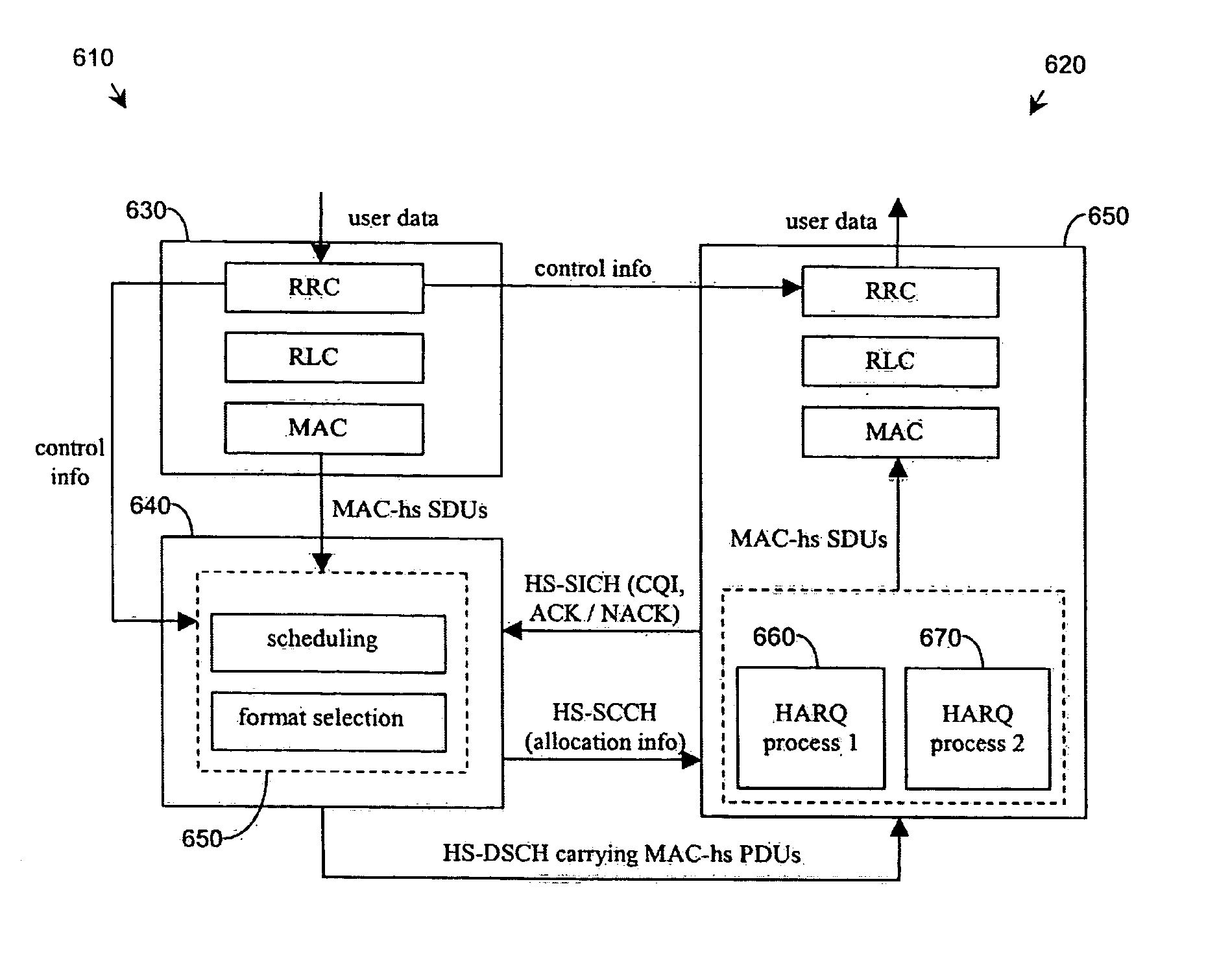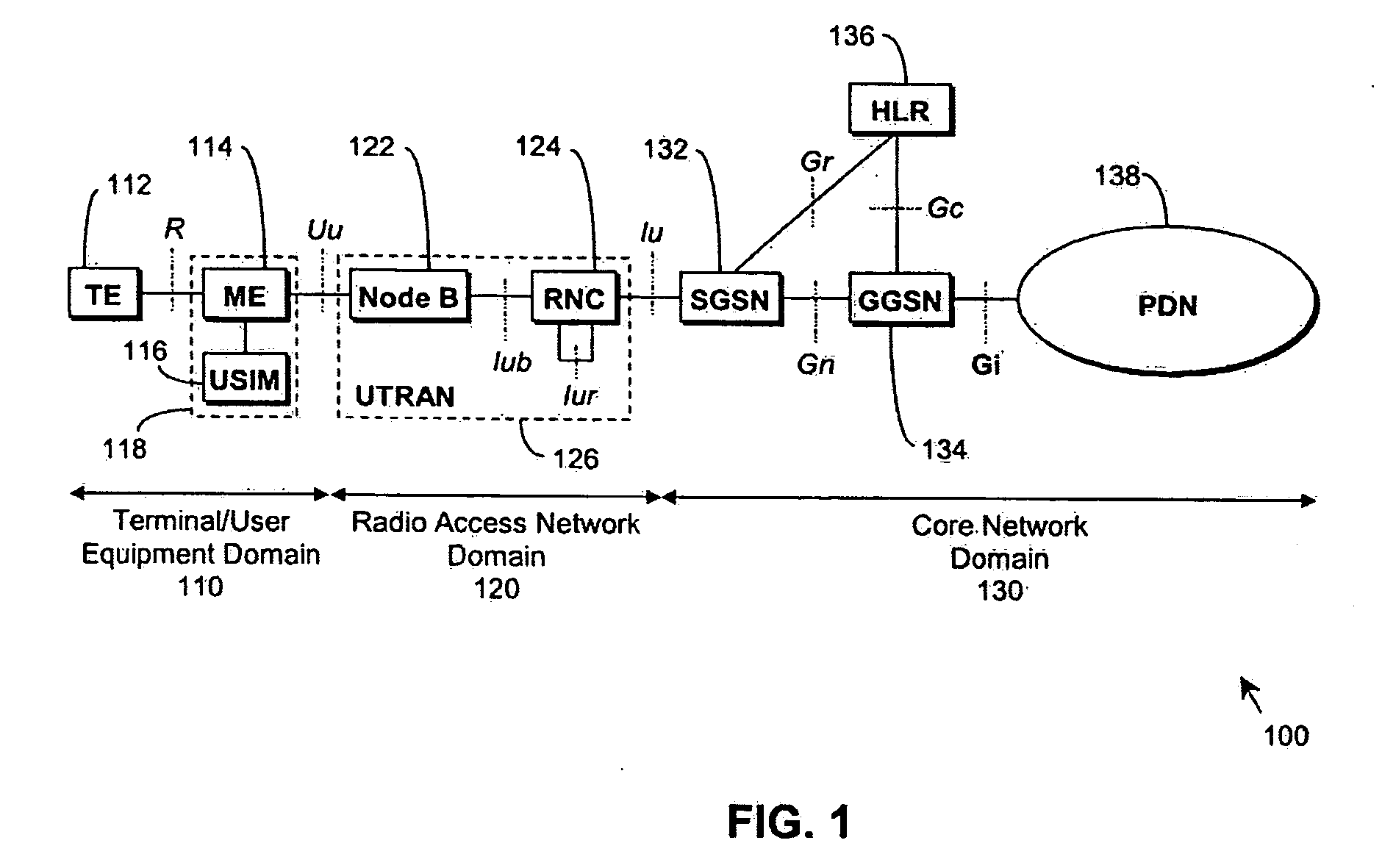Obtaining channel quality information in a wireless communication network
a wireless communication network and channel quality technology, applied in the field of wireless cdma, can solve the problems of fading can be a problem for transmission of mobile data, the receiver will progressively enter the zone of constructive and destructive interference, and the combination can be either constructive or destructiv
- Summary
- Abstract
- Description
- Claims
- Application Information
AI Technical Summary
Problems solved by technology
Method used
Image
Examples
embodiments
[0090] In practice an embodiment of the invention may be based on a 3G (3rd Generation) TDD Node B. This Node B forms part of a 3G cellular network and services multiple UEs. The Node B transmits and receives signals from one or several antennas to which it is attached. The Node B is positioned at a cell site.
[0091] The Node B implements the TDD HSDPA feature as specified by 3GPP. The Node B schedules UEs in priority order according to a proportional fair scheduling algorithm. The proportional fair scheduling metric is a function of the amount of data pending for transmission to that UE, a list of times that the UE has been scheduled at previously and the channel quality at the UE.
[0092] The Node B gains channel quality information on the HSSICH channel. Channel quality information is thus returned to the Node B either as a consequence of allocation of user-data bearing HS-DSCH resources or as a consequence of the Node B sending a CQI request to the UE.
[0093] The Node B partition...
PUM
 Login to View More
Login to View More Abstract
Description
Claims
Application Information
 Login to View More
Login to View More - R&D
- Intellectual Property
- Life Sciences
- Materials
- Tech Scout
- Unparalleled Data Quality
- Higher Quality Content
- 60% Fewer Hallucinations
Browse by: Latest US Patents, China's latest patents, Technical Efficacy Thesaurus, Application Domain, Technology Topic, Popular Technical Reports.
© 2025 PatSnap. All rights reserved.Legal|Privacy policy|Modern Slavery Act Transparency Statement|Sitemap|About US| Contact US: help@patsnap.com



